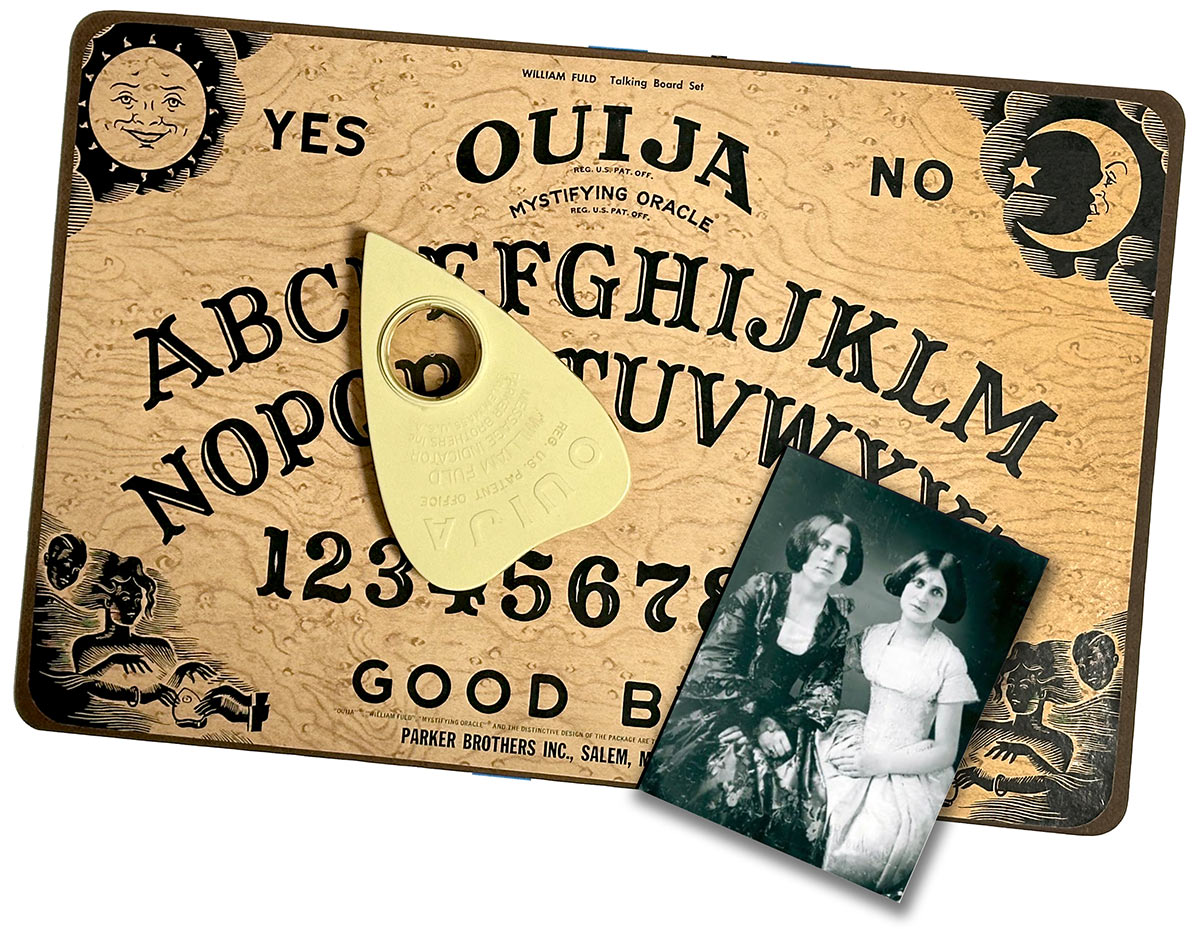Ouija Boards have roots in 19th-century Spiritualism

Every Zoom meeting begins with someone saying, “Hello, is anybody here? Can you hear me?” However, before the internet, Spiritualists used different ways to contact people, specifically the dead.
The Ouija board, a popular board game, has its roots in Spiritualism, a belief system that involves communicating with spirits with a set belief that people, even in death, carry on living.
This ideology dates back to 1848 in Hydesville, New York, when the Fox Sisters created knocking sounds that were alleged to be a spirit communicating with the sisters.
Word of their spiritual interactions spread quickly, and the Fox Sisters, now turned mediums, held public seances which skyrocketed the practice and belief of Spiritualism, not only in America but in Europe as well.
People were drawn to the idea of being able to contact the dead and being able to communicate with those on the other side. The idea comforted people who lost loved ones in the Civil War. Although the Fox Sister’s credibility was eventually denounced, that did not stop people from believing in Spiritualism and trying to contact the other side.
Planchettes (French for little plank) began to gain traction during the era of Spiritualism. This wooden heart-shaped device, which aided in automatic writing and was used to contact the spiritual realm, can be traced all the way to the 1850s, with French monks being the first to invent the planchette. However, G.W. Cottrell was the first to produce the first planchettes in the United States.
They began to gain traction in France and England in the 1850s and gained popularity in the United States in the 1860s. The device became a staple in the Spiritualism movement and was used in seances. Although its use was intended for communicating with spirits, the planchette was also used as parlor entertainment as it allowed men and women to hold hands in a dark room, which was frowned upon in the Victorian era.
Entrepreneur Charles Kennard got word that “talking boards” were taking over Ohio and as he was no stranger to a quick cash grab, he took it upon himself to start producing and pitching his own version of the talking boards, known as the Ouija board, in 1890 to investors.
After hearing no many times, Kennard finally got a yes from a local attorney, Elijah Bond, whose sister-in-law was acclaimed to be a “strong medium.”
The planchette’s automatic writing feature was swapped out for a simple board that dictated messages through letters and numbers, which the spirits could use to communicate with the living.
The origin of the word is unknown, but people believe Ouija comes from the French word “oui” and the German word “ja,” which means yes. However, medium Helen Peters Nosworthy claimed it means “good luck,” after she asked the board its meaning.
Kennard’s novelty company began mass producing Ouija boards, as we know them today, and they not only became a well-known board game used to communicate with spirits but also became a popular form of entertainment that outsold Monopoly.
The Ouija board became more than just a fun game. During the 1800s, most people failed to live into their 50s, so when Ouija boards hit the market, people were eager to get their hands on them to contact the dead. The boards gained so much traction that roughly 2,000 boards were sold a week.
What was once marketed as a fun party game, or even a game that encouraged intimacy in couples, soon took a turn as Hollywood began advertising the Ouija board in sinister ways, stripping it of its innocence. The Ouija board has been featured in various films with paranormal activity, the most popular being “Ouija the Movie” in 2014, which sparked the interest of many children and young adults, boosting Ouija board sales.
The boards are now manufactured in new designs and themes such as “Stranger Things,” “Beetlejuice,” and even a pink board with cats and greenery to appeal to the younger generation.
There is also a “Holy Spirit Board” which follows the Ouija board blueprint allows Christians to communicate with Jesus Christ. Although many believe the Ouija board to be a hoax, a study by the University of British Columbia proves the game has Spiritualist undertones.
However, it may not work the way we assume.
What makes the planchette move is known as the ideomotor effect. It is the unconscious influence of the mind on muscle movements. This effect is tied to Sigmund Freud’s unconscious mind theory, which is also linked to Spiritualism.
Although the planchette has been said to have no actual spiritual effect, many still believe the Ouija board is a game to be taken seriously. One must follow a set procedure when using the Ouija board, and if played incorrectly it may just cost you your sanity.
Don’t forget to say goodbye after playing, or you might have a permanent guest who won’t disappear, not even through praying.
